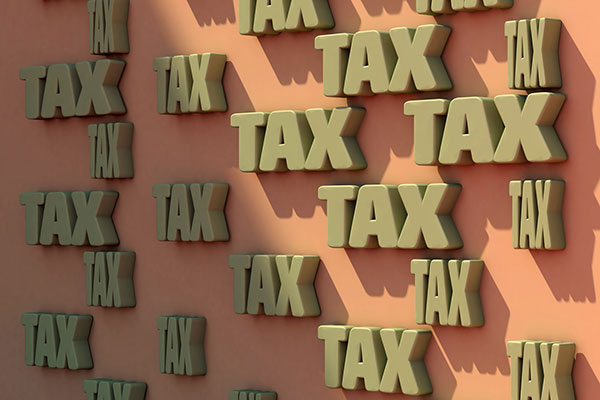Your essential guide to capital gains tax and reducing your liability
17th November 2022 12:45
We look at the ins and outs of CGT, consider second properties, and how best to organise your finances to minimise tax liability.

It was announced in today's autumn statement that the capital gains tax (CGT) threshold will be halved next April, from £12,300 to £6,000. It will then be cut to £3,000 in April 2024. Cutting the threshold will draw more people into the tax net. This will raise the government £1.6 billion by April 2028.
Below we run through all you need to know about CGT.
Capital gains tax (CGT) is paid on any gains you make when you sell an asset – for example if you make a profit when you sell a second property, jewellery and art, or shares and funds unless they’re held in an ISA or pension. It is calculated on the gain you make on the sale, rather than the sale price itself, and you can also deduct buying and selling costs from the profit.
- Find out more: SIPPs explained | SIPP calculator | SIPP drawdown
There are two different rates of CGT – one for property and one for other assets – and how much you pay depends on your tax band. On most assets, CGT is just 10% for a basic-rate taxpayer and 20% for a higher or additional-rate taxpayer, but for property gains, the tax stands at 18% for a basic-rate taxpayer and 28% for higher-rate payers.
These are relatively low rates – not long ago CGT was payable at 40%. Note that if your income makes you a basic-rate taxpayer but you have made a large capital gain that has pushed you into a higher-rate tax bracket, you will pay the higher rate of CGT on the amount that takes you over the threshold.
Everyone has a certain value of capital gains that they can make before CGT kicks in. In the tax year 2020/21, the CGT allowance is £12,300, but you aren’t allowed to carry any unused tax allowance into the next tax year. However, as announced in today's Autumn statement the tax threshold will be halved next April, from £12,300 to £6,000. It will then be cut to £3,000 in April 2024.
Second properties
A married couple can have only one CGT-exempt ‘principal private residence’ (PPR), so if you own two houses you should generally elect the one with the higher potential gain as your PPR. You have up to two years from the acquisition of the second home to make this decision, otherwise HMRC may decide which one is your main residence based on the facts – including, for example, how long you spend in each house, and where your personal ties are strongest.
HMRC disputes elections where the second home has been elected and then sold at a substantial gain after a short period of ownership, such as after being inherited, especially where it has not been used as a residence by the owner.
CGT on the rise
CGT is an important source of income for the Exchequer, and over the years the regime has been tightened up. While there is no CGT on the sale of your ‘main residence’ provided you have lived there throughout the time you owned it, there have been changes to the tax situation if you move out to renovate it. From April 2020, people have had only nine months to do the property up and sell it, while previously the final 18 months of ownership was always treated as if you lived there, whether you did or not.
Furthermore, people selling buy-to-let properties or other property must now make a digital return to HMRC and pay an estimate of the CGT owed within 60 days of the sale completion. In previous years, they have been able to keep the money for much longer because CGT was not payable until 31 January after the end of the tax year in which the sale occurred so, depending on the disposal date, you had between nine months and 18 months to cough up.
The cost of any improvements to the property, such as a new extension, are deductible from the capital gain (though maintenance such as redecoration is not). However, if there have been numerous improvements over the years, it may be tricky to find all the supporting documentation. Interest on the unpaid tax and penalties will be levied if the new rules are not followed.
As well as the buy-to-let market, this new measure affects owners of holiday homes, main residences that have been rented out at some point (though taking in single lodgers doesn’t count), and cases where a house has been partly used for business purposes.
So what can be done to minimise your CGT liability?

Allowance tactics
If your asset is owned jointly with another person, you can use both annual allowances. Unmarried partners can each nominate a different property as their main home, and benefit from tax relief on both.
If you are married or in a civil partnership, you can also transfer assets to each other without charge, enabling the use of both allowances, so long as the transfer is a genuine, outright gift. However, if the asset is subsequently sold, you’ll be charged based on the gain made from the date you first owned it as a couple, rather than from the time the asset was transferred to your partner.
Use your losses
You can also deduct any losses you have made, which will reduce your tax bill as CGT is payable on that year’s total gain. This means it can sometimes be best to sell some failing assets at a loss, to bring the overall gain in the tax year back down below the annual allowance.
Although you can’t carry forward any unused allowances, you can carry forward losses that haven’t already been offset against gains. It may therefore be helpful to submit details of losses in your tax return even if there is no CGT to pay, to strengthen any claim to offset them against a gain in future years.
Split sales
Staggering sales across tax years can also help reduce your CGT bills. For example, instead of selling employee shares received through a save-as-you-earn (SAYE) share option scheme in one tranche, consider selling in several stages across tax years, so that each year’s gain is within your annual tax-free allowance. If you receive shares through a SAYE share option scheme or a share incentive plan, you have 90 days to transfer them tax-free to an Isa or pension.
Crystallise gains
One way to mitigate the tax on investments such as shares is to sell the share and buy it back after 30 days, so crystallising the gain. Unfortunately, you are no longer allowed to ‘bed-and-breakfast’ shares, selling and repurchasing the very next day. However, spouses and civil partners can buy back the shares sold by their partner immediately, so this is another solution to realise a gain CGT-free while enabling the family to retain the assets.
Pension potential
Some investors may also be able to reduce the tax charge by making a pension contribution, because these extend the upper limit of an individual’s income tax band by the amount of the gross contribution, which in turn might push you down into a lower CGT tax band, from 20% to 10%.
CGT relief
CGT relief is available if you give land, property or qualifying shares to a charity, or sell them to a charity at less than market value. Any gains made on investments in an EIS (Enterprise Investment Scheme) are also free from CGT if held for three years or more, and you can defer CGT if you sell EIS investments within three years but roll the proceeds back into another qualifying scheme.
CGT is not payable on ‘wasting assets’ such as vintage cars and boats, or on personal belongings (‘chattels’) where the sale proceeds are less than £6,000. Gains can be reported to HMRC via the Report Capital Gain Tax online service, or on yourself-assessment tax return.
These articles are provided for information purposes only. Occasionally, an opinion about whether to buy or sell a specific investment may be provided by third parties. The content is not intended to be a personal recommendation to buy or sell any financial instrument or product, or to adopt any investment strategy as it is not provided based on an assessment of your investing knowledge and experience, your financial situation or your investment objectives. The value of your investments, and the income derived from them, may go down as well as up. You may not get back all the money that you invest. The investments referred to in this article may not be suitable for all investors, and if in doubt, an investor should seek advice from a qualified investment adviser.
Full performance can be found on the company or index summary page on the interactive investor website. Simply click on the company's or index name highlighted in the article.
Editor's Picks